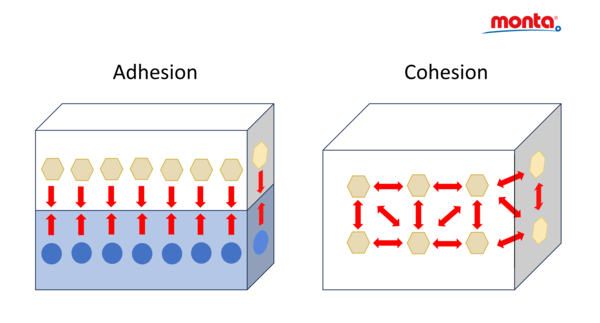Two physical forces form the basis of any adhesive bond: adhesion and cohesion.
Adhesion
Adhesion refers to the tendency of different substances or surfaces to cling to one another. It is caused by intermolecular attraction forces that work between surfaces up to a distance of 10 to 5 mm. The smaller the distance between the surfaces, the greater the adhesion. Smooth appearing surfaces under a microscope actually show jagged surfaces. When these gaps are filled with adhesive, the contact area between the two surfaces is optimised thus leading to maximum adhesion forces.
Cohesion
Cohesion can be described as the tendency of similar substances or surfaces to cling to one another, or in simple terms: the “inner strength” of an adhesive. It is caused by cohesive forces and determines the strength of the cured adhesive when under load.

Cohesion and adhesion are interrelated. As a general rule of thumb: The harder an adhesive, the higher the cohesion and lower the adhesion. And vice versa. Cohesive and adhesive properties can be modified, resulting in harder or softer adhesives.